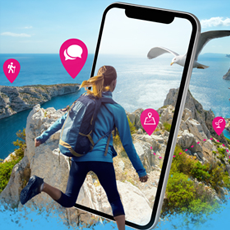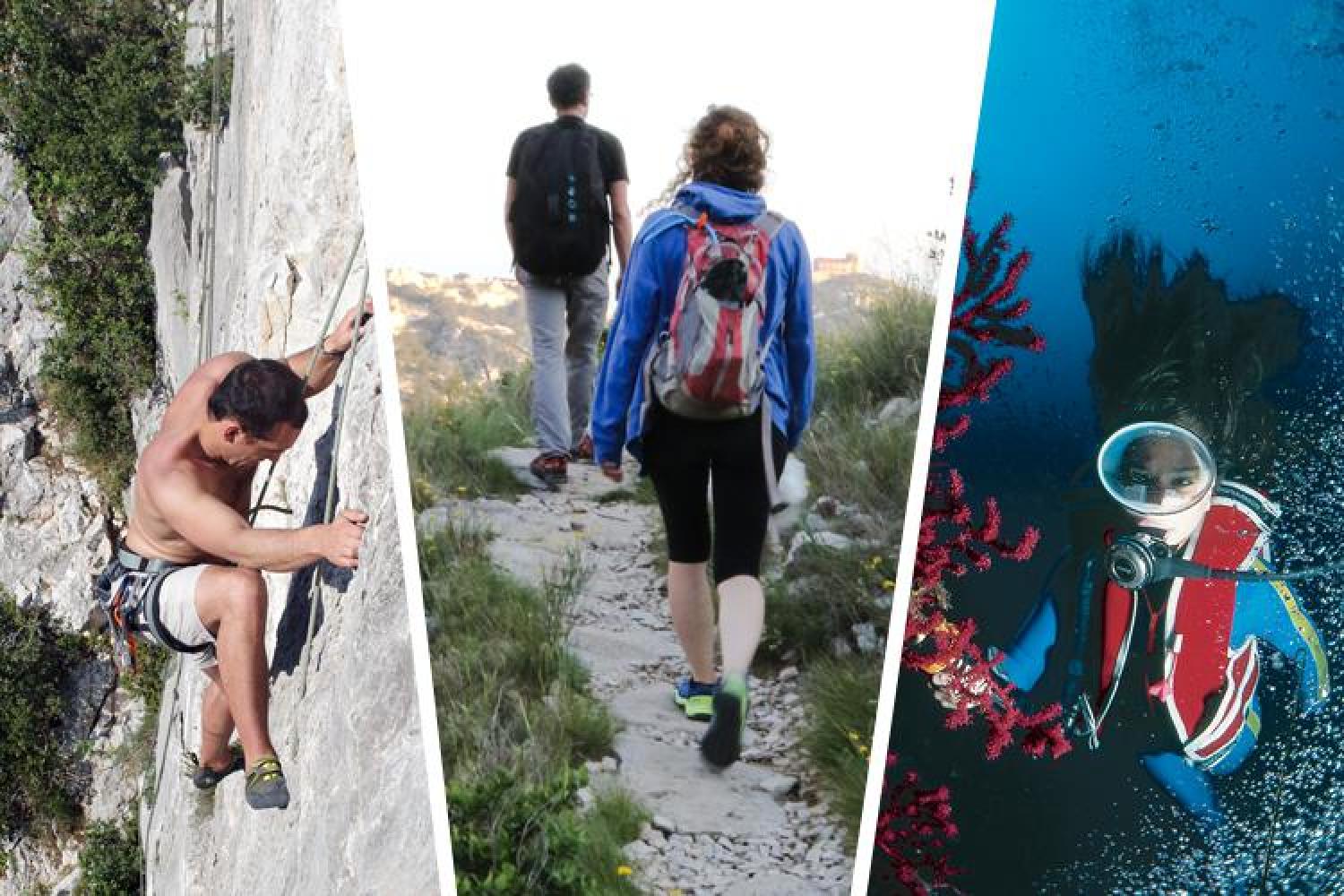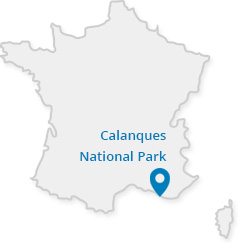What is the purpose of a sports coherence scheme?
The Calanques National Park is an exceptional playground for nature sports enthusiasts. Both a historical melting pot for certain activities and a place where emerging practices are being developed, the Calanques never cease to inspire. The water, the rocks, the winds, the sun, the strength of the landscapes, the richness of the biodiversity... everything in the Calanques invites you to be at one with nature.
The site remains no less fragile however, and the hosting of a large number of sporting activities legitimately raises questions for all those who love this exceptional territory. The integrity of the landscape and the preservation of biodiversity are at stake. The question of the proper cohabitation of practices also arises.
Based on a strong consultation process, the sports strategy debates the hosting of sports practices by seeking to achieve a balance around four coherent areas of reasoning:
- between sports practices and the preservation of natural environments
- between different sports practices
- between participants in the same sport
- between sportsmen and women and other users of the territory: inhabitants, economic players, local authorities, etc.
Since 2018, the search for these balances has been carried out collectively. The National Park has been consulting with representatives from the sports movement and landowners during collaborative workshops. The proposals resulting from this consultation were then translated into concrete management measures: to be validated at the end of 2020.
Finding a balance for sustainable practices
Outdoor sports and leisure activities are a real social phenomenon and have been growing for several years. All the studies show that the French need nature more and more. For many Marseillais, the Calanques are the main place to recharge their batteries, a garden, a breathing space.
Since the creation of the National Park, the hosting of sports and leisure activities has become more structured: the objective is to find a balance between protecting the natural and cultural heritage, preserving the character of the Calanques and hosting sportspeople in an eco-responsible framework. This translates into a balance to be found between freedom (to practice a sport) and responsibility (to watch over the impacts of its practice).
Involving the various stakeholders
Climbing guides, diving clubs, hiking organisations... Representatives of the sports movement were closely associated with the process of developing the sports strategy. Sportspeople are also involved in the process, thanks to a questionnaire that was published online, allowing everyone to provide information about their practices. The testimonies collected were used to help refine the diagnosis of sports practices in the territory. This diagnosis is a basis for future discussions.
A series of collaborative workshops
On Monday 10 December 2018, the first discussion session of the consultation on nature sports took place. This "Agora" was held on the Luminy campus and brought together around a hundred professionals, users, local players, institutions and landowners. It inaugurated a series of thematic workshops that would enable the National Park's nature sports strategy to be co-constructed.
The consultation ended in January 2020 with the last technical committee of the project gathering representatives of the local sports movement. The concrete proposals resulting from this consultation have since been worked on with the landowners of the Calanques territory, who will be responsible for translating the proposals into concrete management measures. The strategy for outdoor sports and activities would be validated by the elected representatives of the local authorities in spring/summer 2020.
Approval of the coherence strategy for outdoor sports and activities
The result of a long process of consultation with all the representatives of the sports movement (individual practitioners, clubs, federations, etc.), economic players (guides, rental companies, tourism operators, etc.), landowners and elected representatives of the territory, the coherence strategy for outdoor sports and activities was unanimously adopted by the National Park's Board of Directors on Wednesday 10 February 2021.
As an area of protected and fragile heritage and a practice ground for a wide variety of activities, the National Park territory has adopted a sports strategy to create the conditions for combining preservation of the site, hosting sustainable sports practices and guaranteeing a quality experience for all sportspeople, especially local ones. The strategy thus sets out a framework for a sports and leisure in nature policy on the territory. It is formalised in an action plan mobilising the sports movement, the National Park, the owners, local authorities and the French State.
Activity by activity, the sports strategy sets out the objectives to be achieved and a series of varied measures to be implemented in the coming years by the competent actors: development and management measures, communication and awareness-raising actions, adoption of new regulations, etc.
The strategy distinguishes three categories of activities to which appropriate responses are provided:
- the historical and heritage activities of the area,
- other activities present in the area,
- emerging activities.
 Calendar
Calendar
2018
- Availability of an online questionnaire for sports practitioners
- First meeting to discuss the issues, priorities and success factors of the strategy for outdoor sports and activities
2019
- Feedback on the diagnosis of outdoor sportspeople
- Themed workshops in small groups on the emerging practices, sporting events and sustainable management of activities.
2020
- Feedback on the coherence strategy for outdoor sports and activities
2021
- Approval of the coherence strategy for outdoor sports and activities
The sports strategy: a response to the Calanques' challenge of overtourism?
Managing overtourism is a priority for the National Park. A specific action plan is being drawn up and the initial measures will be implemented in summer 2021.
The sports strategy is not a response to this problem because it does not aim to reduce the number of sportspeople in the area. The challenge is to ensure that a large number of practices coexist, some of which may have an impact on the natural environment, biodiversity and the character of the area. The challenge is also to achieve a harmonious cohabitation of practices, both with each other and with the non-sporting public.





